Spatial Ecology of the Population of Reef Manta Rays, Mobula alfredi (Krefft, 1868), in New Caledonia Using Satellite Telemetry 1–Horizontal Behaviour
June 2023
Hugo Lassauce, Olivier Chateau & Laurent Wantiez
Keywords: Tagging • Home Range • Habitat Use • Movement Patterns
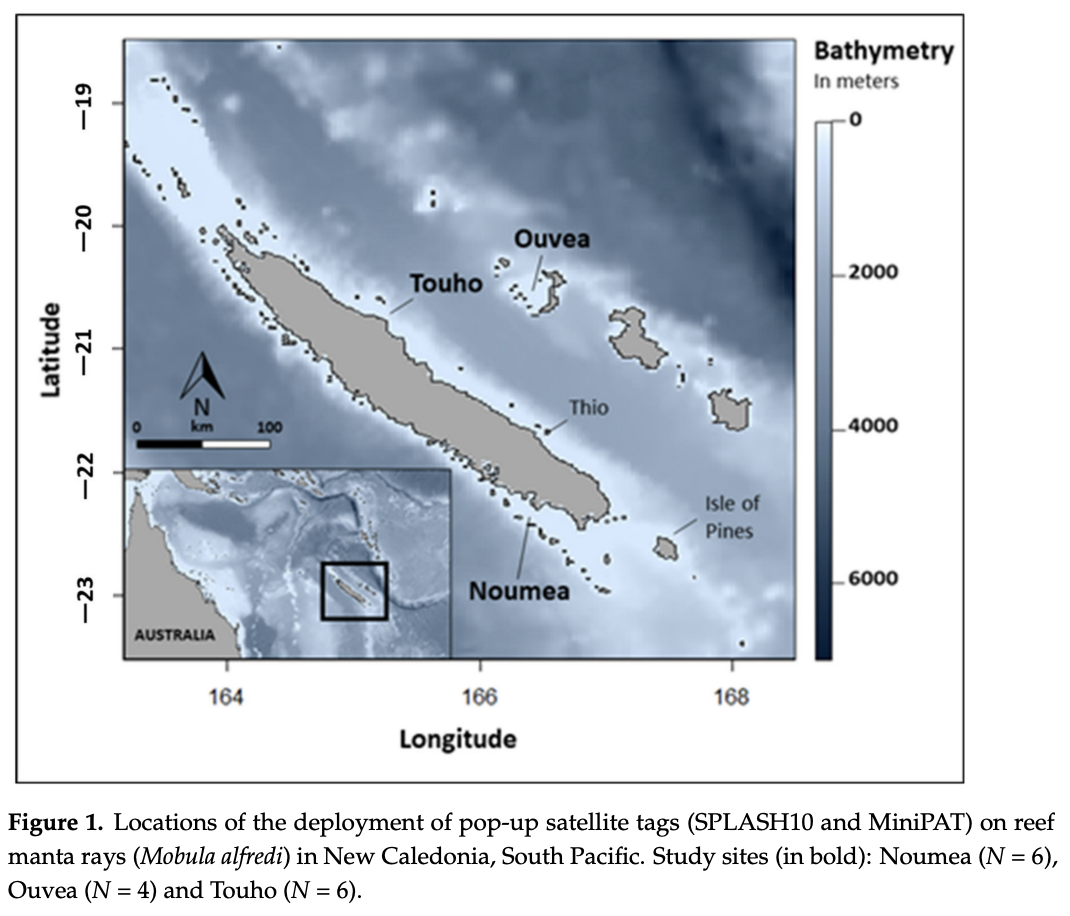
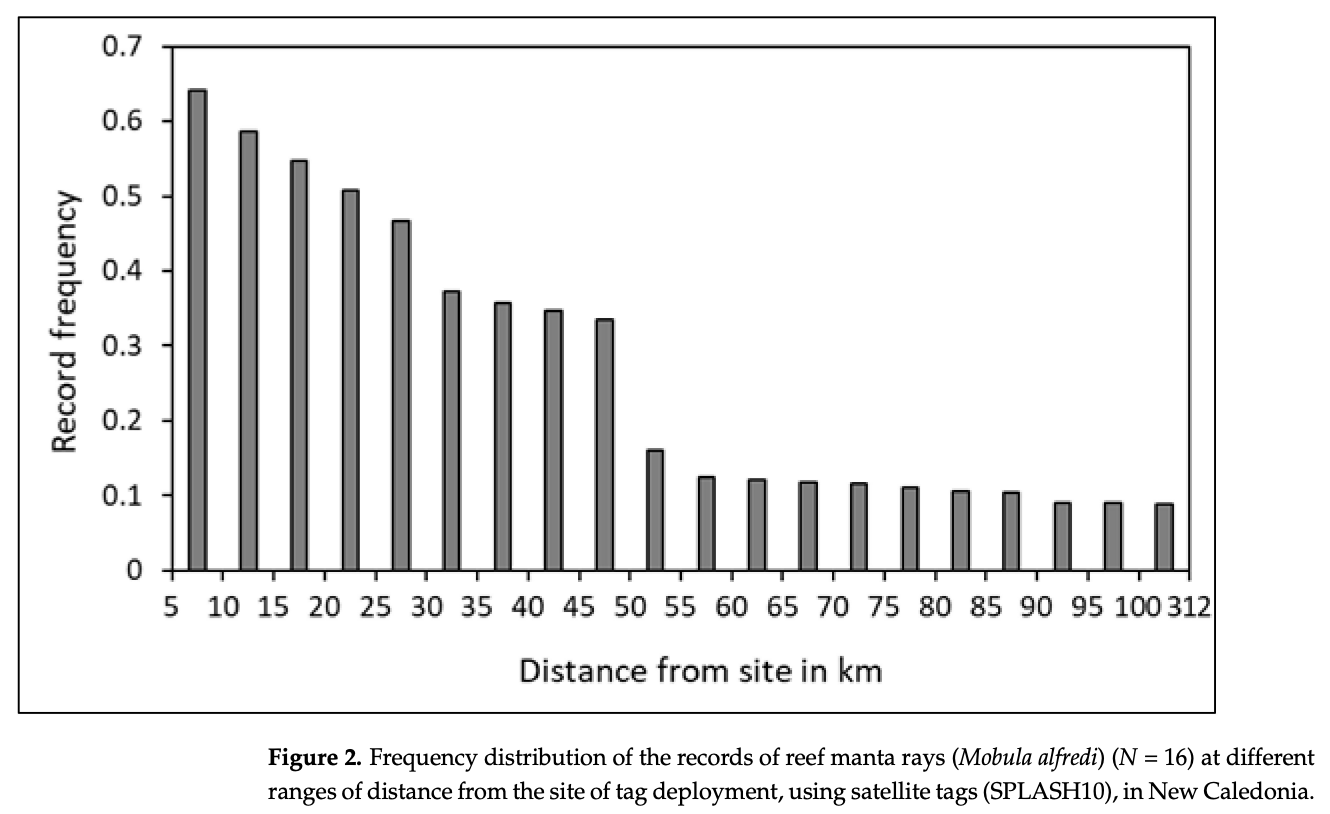
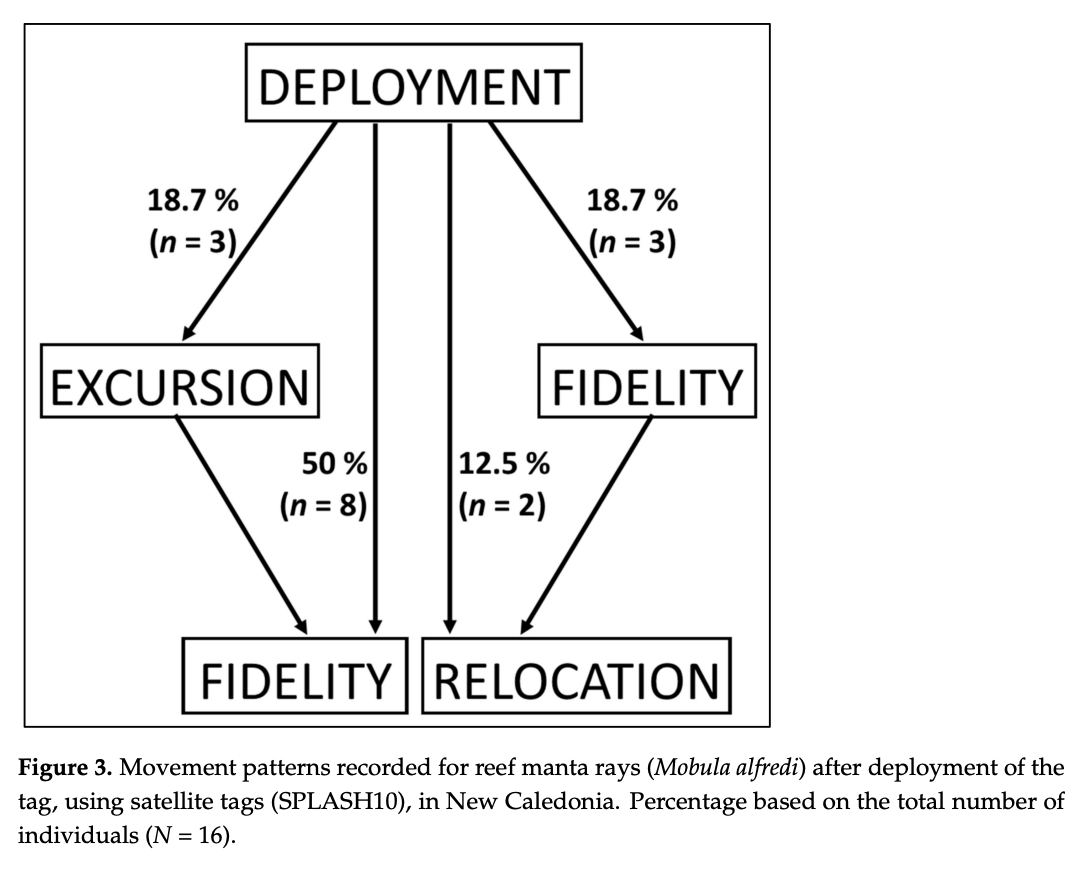
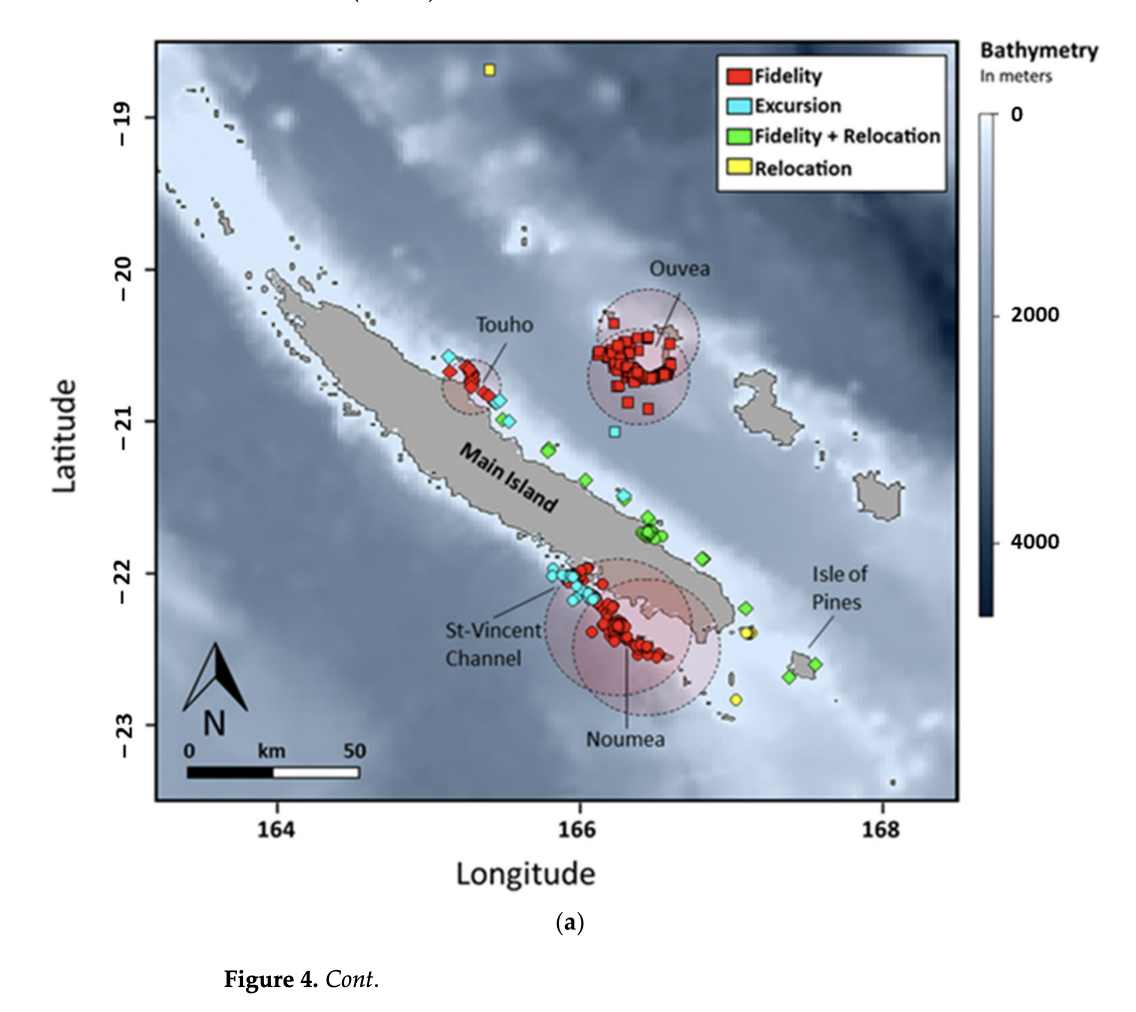
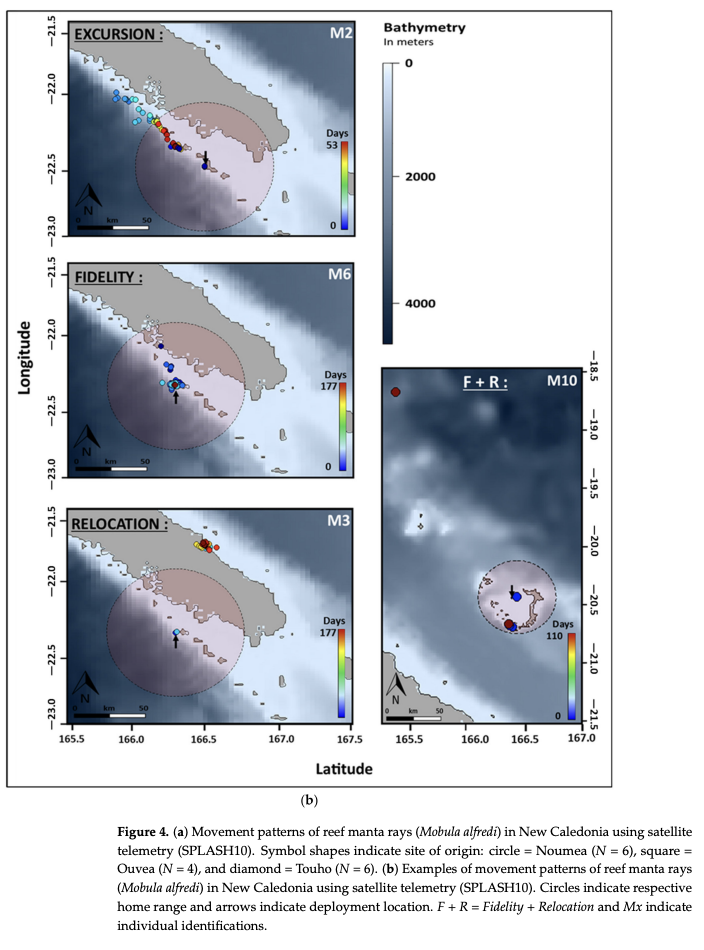
Summary: For this study, the spatial ecology and dispersal patterns of reef manta rays in New Caledonia were investigated using satellite telemetry. Twenty-one rays were tagged, revealing strong site fidelity and a preference for coastal waters. Long-distance migrations of over 300 km were observed, mostly along coastal and shallow water routes. Four movement patterns were identified: Fidelity, Excursion, Fidelity + Relocation, and Relocation. Fidelity, where rays remained within their home range, was the dominant pattern. These findings can inform management strategies for reef manta rays in New Caledonia and other regions.
Abstract
“The reef manta ray, Mobula alfredi (Krefft, 1868), is a highly mobile and plankton-feeding species, classified vulnerable to extinction on the IUCN Red List for Threatened Species. Knowledge on their spatial ecology and the extent of their dispersal remain incomplete, especially within islandfragmented habitats as found in New Caledonia. Satellite telemetry was used to investigate the horizontal movement ecology of reef manta rays in New Caledonia. A total of 21 reef manta rays were tagged with pop-up satellite archival transmitting tags (21 Fastloc and 2 MiniPAT) that remained deployed for a duration ranging from 3 to 180 days (mean ± SE = 76.7 ± 50.3). Rays presented a strong site fidelity and an important affinity for coastal waters. Long-distance migrations (>300 km) were also observed, mainly through coastal and shallow water paths. Horizontal movements were compared to a home range area and classified into four distinct patterns: Fidelity, Excursion, Fidelity + Relocation and Relocation. The most dominant pattern was Fidelity, where manta rays remained within their home range for the whole duration of the tag deployment. Our findings may assist in the design of more appropriate management strategies for the species in New Caledonia and other regions worldwide.”
Author Affiliations
BPR4, University of New Caledonia
Conservation International New-Caledonia
The Manta Trust
Laboratory of Marine Biology and Ecology, Aquarium des Lagons
Funded by
Conservation International
Aquarium des Lagons
MAC3 Impact Philanthropies
The Manta Trust

